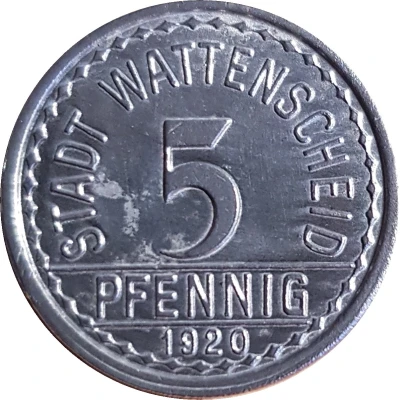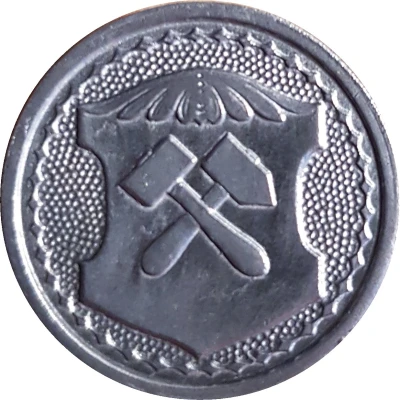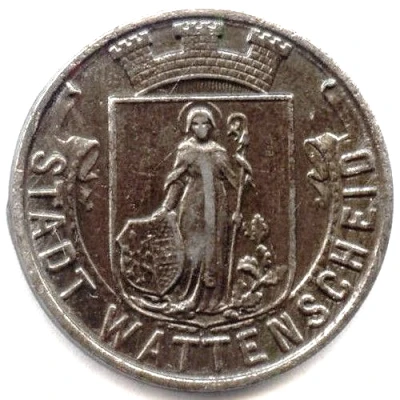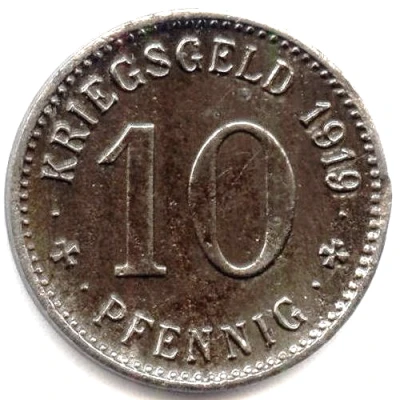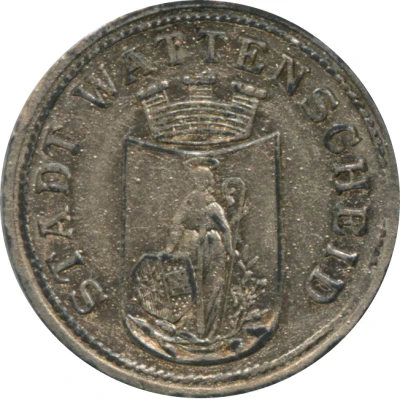


© tolnomur (CC BY-NC-SA)
10 Pfennigs - Wattenscheid
1917 year| Nickel plated zinc | 2.2 g | 21.1 mm |
| Issuer | City of Wattenscheid (Prussian province of Westphalia) |
|---|---|
| Emperor | William II (Wilhelm II) (1888-1918) |
| Type | Standard circulation coin |
| Year | 1917 |
| Value | 10 Pfennigs (10 Pfennige) (0.10) |
| Currency | Mark (1914-1924) |
| Composition | Nickel plated zinc |
| Weight | 2.2 g |
| Diameter | 21.1 mm |
| Thickness | 1 mm |
| Shape | Round |
| Technique | Milled |
| Orientation | Medal alignment ↑↑ |
| Demonetized | Yes |
| Updated | 2024-10-04 |
| Numista | N#27609 |
|---|---|
| Rarity index | 66% |
Reverse
Rope rim, legend circling denomination centered
Script: Latin
Lettering:
KRIEGSGELD 1917
10
✠ PFENNIG ✠
Edge
Plain
Comment
Issuing agency: [Stadt, Westfalen].Interesting fact
One interesting fact about the 10 Pfennigs - Wattenscheid 1917 coin is that it was issued during a time of economic turmoil in Germany. The country was facing severe inflation, and the value of the German mark had dropped significantly. In response, the government introduced a new currency, the "Notgeld," which included coins like the 10 Pfennigs - Wattenscheid 1917. These coins were made of nickel-plated zinc and had a low denomination, making them more accessible to the general population. Despite their low value, they are now highly sought after by collectors due to their historical significance and rarity.
